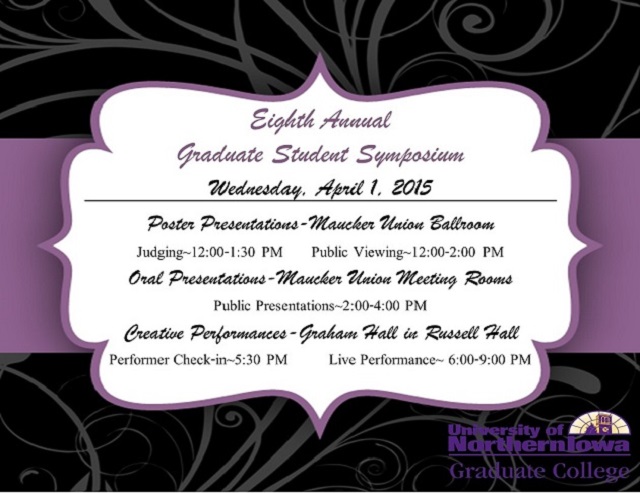
Complete Schedule
Award Winner

Recipient of the 8th Annual Graduate Student Symposium Award, Oral Presentations, Elm Room - First Place (2015)
To go to the Graduate Student Symposium event page, Click here
Presentation Type
Open Access Oral Presentation
Keywords
Sexting; Cell phones and teenagers;
Abstract
Cell phone usage is at an all-time high among teenagers (Lenhart, 2009). As more adolescents utilize cellular devices to communicate, behaviors such as “sexting” have dramatically increased. Known as the sharing of sexually explicit photos, messages, or sexual content, students often report the motivation to sext focuses on gaining popularity or status with the opposite gender (Vanden Abeele, Campbell, Eggermont, & Roe, 2014). Unfortunately, for many teens, sexting often results in serious consequences including potentially registering as a sex offender and/or facing child pornography charges. In many cases, individual states are not clear on sexting and its legality for minors, leading to confusion and lack of awareness among educators and teens. As of January 2015, only twenty states had specific sexting laws, which does not include Iowa (Hinduja & Patchin, 2015). Besides legal repercussions, students may also experience damaging effects to their reputation or in some cases, bullying or cyberbullying. The following presentation will explore the rate of sexting among adolescents and consider which students are more likely to engage in sexting activities according to gender, sexual history, and self-esteem among other factors. Additionally, a section will concentrate on the State of Iowa and recent cases affecting educators. The presentation will conclude with a segment devoted to key strategies for school officials, including counselors, to utilize in the event of a sexting scandal.
Start Date
1-4-2015 2:00 PM
End Date
1-4-2015 4:00 PM
Year of Award
2015 Award
Faculty Advisor
Roberto Swazo
Department
School of Applied Human Sciences
Copyright
© 2015 Scotti Hagensick
File Format
application/pdf
Embargo Date
3-15-2015
Adolescents and Sexting: The Various Consequences and Strategies for Schools to Respond
Cell phone usage is at an all-time high among teenagers (Lenhart, 2009). As more adolescents utilize cellular devices to communicate, behaviors such as “sexting” have dramatically increased. Known as the sharing of sexually explicit photos, messages, or sexual content, students often report the motivation to sext focuses on gaining popularity or status with the opposite gender (Vanden Abeele, Campbell, Eggermont, & Roe, 2014). Unfortunately, for many teens, sexting often results in serious consequences including potentially registering as a sex offender and/or facing child pornography charges. In many cases, individual states are not clear on sexting and its legality for minors, leading to confusion and lack of awareness among educators and teens. As of January 2015, only twenty states had specific sexting laws, which does not include Iowa (Hinduja & Patchin, 2015). Besides legal repercussions, students may also experience damaging effects to their reputation or in some cases, bullying or cyberbullying. The following presentation will explore the rate of sexting among adolescents and consider which students are more likely to engage in sexting activities according to gender, sexual history, and self-esteem among other factors. Additionally, a section will concentrate on the State of Iowa and recent cases affecting educators. The presentation will conclude with a segment devoted to key strategies for school officials, including counselors, to utilize in the event of a sexting scandal.


